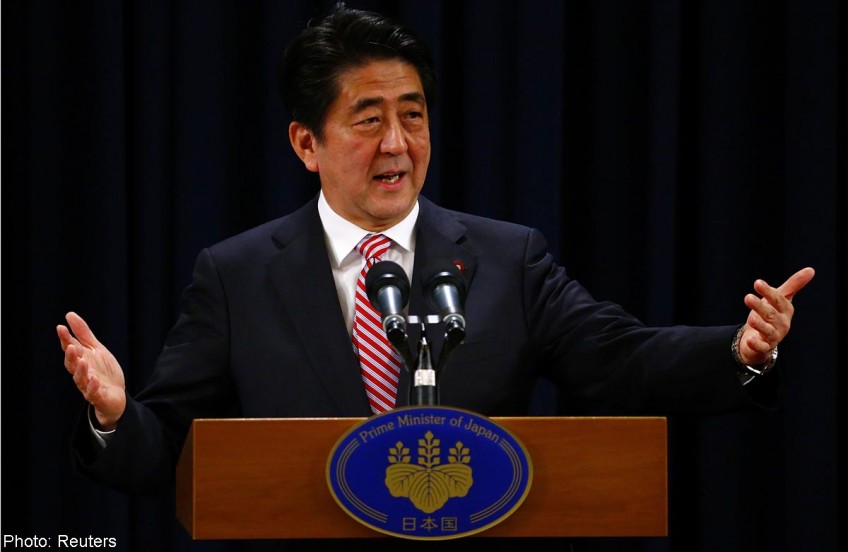FTAAP faces a long path to fruition

The Free Trade Area of the Asia-Pacific (FTAAP), which generally promises greater benefits than other regional trade pacts currently under negotiation, has finally got off the ground a decade after it was first broached by Asia-Pacific Economic Cooperation (Apec) leaders.
But with the myriad caveats attached to the "road map" endorsed here this week, and only the tepid marker of end-2016 set for a "strategic study" of the FTAAP to be completed, the path to fruition may take as long, if not longer, said analysts.
"A lot of manoeuvring was needed among the 21 countries to get this statement done," said executive director of the Asian Trade Centre Deborah Elms. "Given current negotiations, this is the best they could have come up with."
The Apec leaders said that the FTAAP would be "high-quality" and addresses "'next-generation' trade and investment issues", but would not supersede the grouping's Bogor goals, which envision developing economies achieving free and open trade and investment by 2020.
At the same time, the Apec leaders made it clear that the FTAAP will be pursued by building on "current and developing regional architectures" such as the US-led Trans-Pacific Partnership (TPP), which has 12 nations so far but which excludes China, and the China-led Regional Comprehensive Economic Partnership (RCEP), a group with 16 members so far but which excludes the United States.
Singapore is a part of both.
In essence, the Apec leaders' road map states that concrete work towards the FTAAP will not overtake smaller deals currently being worked out, said analysts.
This is despite estimates that the economic gain from the FTAAP would eclipse current deals.
The non-governmental Pacific Economic Cooperation Council (PECC) said in a report earlier this month that potential gains could reach US$2.4 trillion (S$3.1 trillion ) - 2.3 per cent of world gross domestic product in 2025.
This dwarfs the 0.2 per cent gain of the TPP and the 0.6 per cent gain of the RCEP.
The final FTAAP road map fell short of Apec host Beijing's ambitions.
Beijing reportedly wanted a "feasibility study" and the endorsement of a 2025 date for the FTAAP to be realised.
In trade terms, embarking on a feasibility study usually means starting full negotiations within a year or two, said experts.
However, the US was reportedly unwilling to shift focus away from the much-delayed TPP deal, which it is hoping to conclude in the next few months.
"The US stands to benefit more from the TPP than the FTAAP, if the two are viewed as alternatives," said Mr Jayant Menon, an economist at the Asian Development Bank.
"Apart from being a deeper or more ambitious agreement, many of the TPP's provisions would particularly benefit US corporate interests, especially those relating to patents and other aspects of intellectual property rights protection."
Given the US resistance, analysts saw Apec leaders' endorsement of the end-2016 deadline for the FTAAP strategic study as just a show of "face" to host Beijing.
The date gives China something concrete to hang its hat on as host, while not disrupting any ongoing negotiations for other trade pacts, said observers.
"By the end of 2016, we will know where the TPP and RCEP deals stand, so in that way it's very well-timed as the point to move on to the next stage," noted Ms Sanchita Basu Das of the Institute of Southeast Asian Studies.
"As a leader, you want to be able to have something the way Indonesia has the 'Bogor goals'," said Ms Elms, referring to the targets set in 1994 that Apec leaders still refer to a decade later.
"That's the kind of thing Beijing would have loved. And with this end-2016 date for the strategic study, it's entirely possible that when they come back together again, it will be referred to as the Beijing pathway."
Mainland analysts spun the deadline as a political win for China.
"Given the US resistance, this was quite an achievement," Commerce Ministry researcher Mei Xinyu said. "Also, end-2016 would be after the US changes its president, so they're basically also committing to not abandoning the FTAAP pathway after this administration."
rchang@sph.com.sg
esthert@sph.com.sg

This article was first published on Nov 14, 2014.
Get a copy of The Straits Times or go to straitstimes.com for more stories.